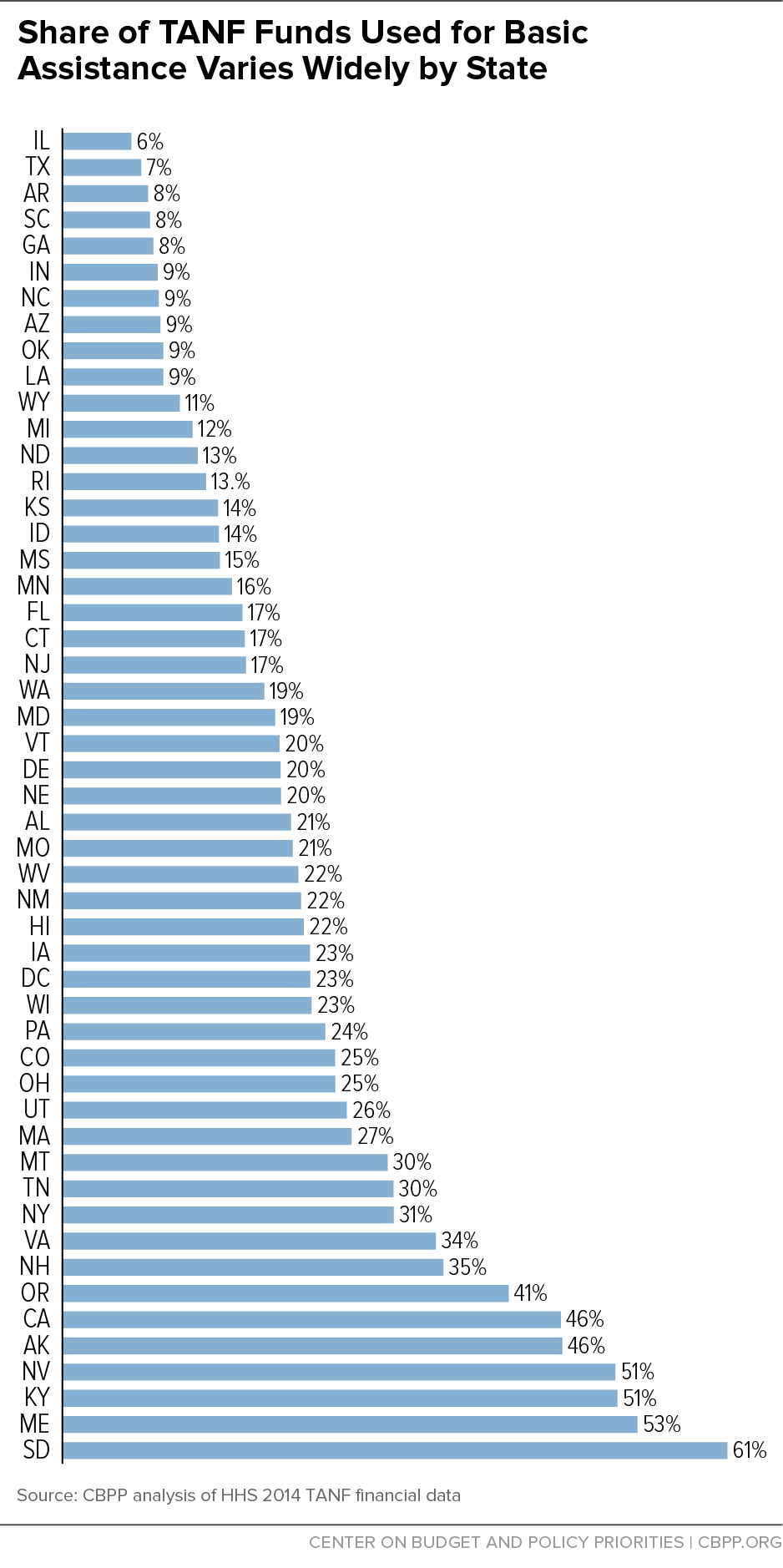BEYOND THE NUMBERS
As the New York Times points out — and our updated paper on Temporary Assistance for Needy Families (TANF) spending shows — our nation’s cash welfare system is only a shell of what it was nearly two decades ago.
“What we lost [under welfare reform] is a commitment to the poor who face significant barriers to work, whether because of child care or physical or mental disabilities,” the University of Kentucky’s James P. Ziliak told the Times. “We have walked away from cash [assistance] for that group and that group has suffered considerably.”
The figures for some individual states are particularly troubling, our report shows. Ten states spent less than 10 percent of their federal and state TANF funds on basic assistance for poor families in 2014: Illinois, Texas, Arkansas, South Carolina, Georgia, Indiana, North Carolina, Arizona, Oklahoma, and Louisiana. (See chart.)
Not surprisingly, the states that spend the smallest shares of their TANF funds on basic assistance generally have lower benefits and help a smaller share of poor families than the typical state.
The two most populous states, California and Texas, provide sharp contrasting pictures of TANF’s safety-net role.
- California spent 46 percent of its federal and state TANF funds on basic assistance in 2014. For every 100 poor families with children in the state, 65 received TANF cash assistance. Monthly benefits for a family of three with no other income were $670 in 2014, or 41 percent of the poverty line.
- Texas spent just 7 percent of its TANF funds on basic assistance in 2014. For every 100 poor families with children in the state, five received TANF cash assistance. Monthly benefits for a family of three with no other income were $277 in 2014, or 17 percent of the poverty line.
Because basic assistance reaches fewer poor families and provides less to those it serves, TANF lifts fewer children out of deep poverty than its predecessor, Aid to Families with Dependent Children. Nationally, the number of children in deep poverty has risen by nearly 50 percent since TANF’s creation in 1996, from 1.5 million to 2.2 million.
See our state-by-state fact sheets and spreadsheet for more detail on state TANF spending.

